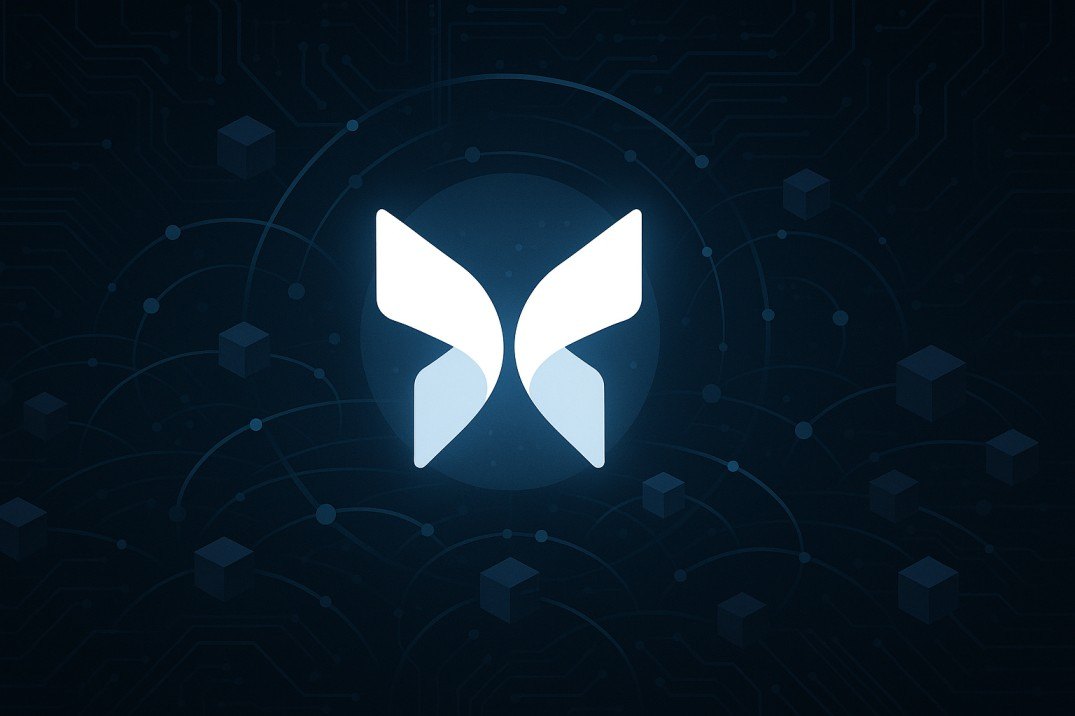TL;DR
- Morpho is a decentralized, non-custodial lending protocol on EVM chains for lending & borrowing over-collateralized assets.
- It operates via immutable smart contracts called Morpho Markets (v1) and Vaults (v1 & v2) that simplify user participation.
- Vaults v2 bring key upgrades: universal adaptability, flexible yield sources via Adapters, granular risk control (caps & IDs), and curator-managed rates.
- Morpho V2 introduces intents-based architecture: lenders and borrowers express what they want (rate, duration, collateral), and system tries to match offers.
- Key risks: liquidation risk, protocol risks in new features, regulatory & market risks.
- Why it matters: combination of flexibility, improved yield strategies, better control over risks, and growing interest from institutions.
Morpho is a decentralized (i.e. permissionless) protocol for lending and borrowing crypto assets. It runs on Ethereum Virtual Machine (EVM) compatible chains. Key traits: it's non-custodial (users keep control of their assets), designed to offer over-collateralized loans, transparency, and tools that make DeFi lending more efficient and flexible.
There are several parts of "Morpho" worth distinguishing:
Morpho Protocol: the smart contract layer implementing lending, borrowing, and markets.
Morpho Interfaces: web UIs (user interfaces) that let users interact with the protocol.
Morpho Governance: decisions around upgrades, tokenomics, etc., driven by the MORPHO token.
Morpho Association: a legal entity (in France) grouping contributors and helping decentralize decision making.
Core Concepts & Key Components

Here are the building blocks that make Morpho operate, especially in its more recent versions:
Over-Collateralized Lending
Users supply collateral (ERC-20 / ERC-4626 tokens) to borrow other tokens. Collateral value must exceed borrow amount - this protects the system. If collateral drops in value past certain thresholds, liquidation mechanisms kick in to protect lenders.
Isolated Markets (Morpho Market v1)
- Each "market" pairs one collateral asset with one borrowed asset.
- Markets are immutable once deployed: parameters like liquidation thresholds, rates, etc., stay fixed.
- Risks are isolated: failure in one market shouldn't directly impact others.
Vaults
Vault v1: Users deposit into a vault tied to specific Morpho markets. Yields come from interest paid by borrowers. Less complexity for depositors.
Vault v2: Upgraded version. More flexible. Key features include adapters, risk caps, curator-managed interest, ability to connect to many protocols for yield.
Roles & Governance
Different roles in v2 vaults:
- Owner: administrative control (appoint others).
- Curator: strategy & risk decisions, setting which markets / adapters to enable.
- Allocator: actually moves capital per the Curator's strategy.
- Sentinel: safety checks; a kind of oversight or emergency guard.
The MORPHO token is used for governance: token holders help decide protocol-wide changes.
What's New in Morpho V2

Morpho's V2 is a set of upgrades meant to make the protocol more flexible, more suited to institutional / large users, and better equipped for complex yield and risk management.
Intent-Based Architecture
-
Users express intents (what they want: a loan of X, for Y duration, at Z rate, with particular collateral). The system uses solvers / matchmakers to find the best counterparty.
-
This replaces or complements older pool-based methods where rates were often formulaic and terms rigid.
Flexible Loan Terms
-
Fixed-rate, fixed-term loans are now possible. That means borrowers can know in advance what cost they'll pay, reducing surprises.
-
Collateral options expand: single asset, multiple assets (portfolios), even real-world assets. More choice means more complexity-but more possibilities.
Vaults v2: Adapters, Caps, and Curator Control
-
Adapters let Vaults v2 link to external yield sources (other protocols, or other Morpho components). This makes yield generation more varied and potentially more efficient.
-
ID & Cap System enables risk curators to limit exposure not just by market, but by abstract risk identifiers like collateral type, oracle, etc. Helps guard against overexposure.
-
Vault Interest Controller (VIC) allows Curators to set or adjust yields in more complex ways (vs strictly automatic from rates). This lets vaults represent yield from sources that don't accrue interest in simple continuous form.
Cross-Chain & Broader Institutional Support
- Morpho V2 aims to support cross-chain lending and borrowing, broadening reach.
- Compliance enhancements: certain gating, stronger safety roles, more visibility. This helps institutions feel safer engaging.
Token Utility & MORPHO Token
The MORPHO token is central to governance and alignment of incentives. Here's what it actually does:
- Used in governance: token holders vote on protocol-level changes (upgrades, risk param settings, adapters etc.).
- Supports the ownership/association structure: Morpho Association has been increasing decentralized ownership/control to MORPHO token holders.
- Incentives / rewards: users (lenders/borrowers) may receive MORPHO rewards tied to usage, supply, or participation.
- Alignment: token holds parties accountable and ensures that major upgrades (like V2 features) reflect community preferences.
MORPHO is not (according to current documentation) a token with built-in profit share (dividends) or equity in a company. Its primary purpose is governance and incentive alignment.
How It Works in Practice
Putting it all together, here's how a user might interact with Morpho under V2:
1. Supplying capital or borrowing: User provides collateral or supplies liquidity. In Markets V2, they might express an intent (e.g. lend 50,000 USDC at fixed rate over 30 days).
2. Solvers / matchmakers search for counterparties or match intents in global market. Terms may be fixed or variable depending on user choice.
3. Vaults: A user depositing into a Vault V2 doesn't have to pick individual markets. Their capital is allocated via approved adapters, risk settings by Curator, and interest/yield managed via VIC.
4. Risk monitoring: Health of borrow positions monitored via oracles and market parameters. If collateral falls, liquidation triggers. Also vaults have caps to avoid oversize exposure.
5. Governance & token holder input: Changes to settings (new adapters, risk parameters, interest settings) generally require governance processes and timelocks-this ensures transparency and gives users ability to react.
Tokenomics & Market Stats
Here are what public sources say as of mid-2025:
- Morpho is among top DeFi lending protocols by Total Value Locked (TVL).
- MORPHO token launch in November 2024 saw growing use and liquidity.
- Growth in deposits / vault usage has increased sharply after Vaults architecture improvements. E.g. Vaults V2 are gaining adoption by yield managers.
Details (exact percentages, caps, distribution) depend on specific vaults / markets. Users should check each market's parameters.
Benefits
Morpho offers several strengths for users and developers:
Flexibility: Ability to tailor loans (duration, rate, collateral) under V2 gives more control.
Accessibility via Vaults: Makes it easier for passive users to earn yield without picking individual markets.
Better risk controls: Caps, roles, adapters, timelocks help prevent misuse or extreme exposure.
Institutional appeal: Predictable loan terms, fixed rates, risk management tools attract more serious players.
Innovation in DeFi primitive: Improvements like intent based matching, vault interest controllers, adapters help move DeFi forward.
Challenges & Risks
No protocol is without risks. Morpho has several to watch:
Liquidation risk: Borrowers can lose collateral if market prices move sharply. Users must monitor health factors.
Smart contract risk: V2 introduces newer, more complex components (adapters, VIC, new market mechanisms). More code = more potential bugs.
Risk of adapter misbehavior: Since adapters connect to external protocols, failures upstream can affect vaults.
Regulatory risk: As institutions participate, demands for compliance (KYC, licensing, oversight) may increase. Morpho has introduced gating but possibly faces more scrutiny.
Competition: Other lending protocols are also adding improved features; keeping differentiated matters.
Why Morpho Matters
Morpho is one of the DeFi protocols pushing beyond simple pool lending. Its move toward intent-based lending, fixed rate & term offers, flexible collateral, combined with sophisticated vaults, points toward a future where DeFi is less ad-hoc, more predictable, and more usable by mainstream players.
It bridges the gap between retail DeFi users and institutional finance by offering both passive yield via vaults and customizable options via markets. Its architecture, if mature and secure, could become a backbone for many DeFi applications.
Final Thought
Morpho Protocol shows that DeFi doesn't need to stay rigid or limited. With V2 upgrades, the protocol steps toward being a more mature, controllable, and flexible financial infrastructure. By letting users express what they want, not forcing them into generic pools, Morpho is building toward fairness and choice.
There are still growing pains: implementing fixed terms, managing risks across many assets, ensuring adapters are secure, and navigating regulatory expectations. But for those who want lending and borrowing that feels more like real world finance-predictable, transparent, and adjustable-Morpho is one of the few protocols doing that well today.
Read More : COTI V2 Unpacked: A Straightforward Overview











